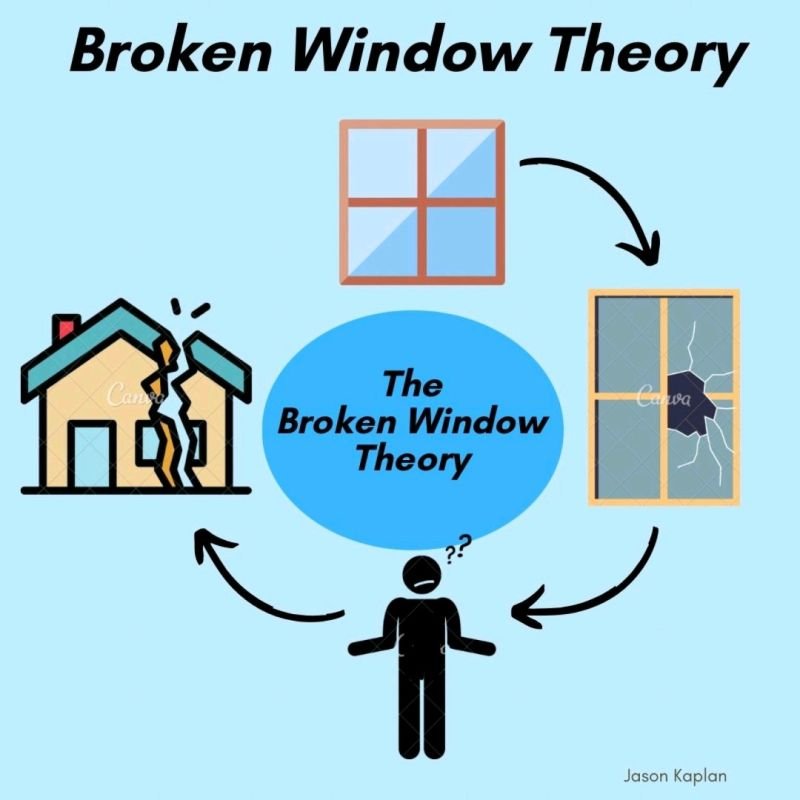Broken Window Theory: How Small Signs of Disorder Can Lead to Bigger Crimes
The Broken Window Theory is one of the most debated and impact ideas in criminology, sociology, and urban planning. Proposed in 1982 by James Q. Wilson and George L. Kelling, this theory suggests that minor signs of disorder in a community, if left unaddressed, can encourage more serious crime and antisocial behavior.
The Origin of the Theory
The concept emerged from a simple metaphor:
- If a window in a building is broken and left unrepaired, it signals neglect.
- This small act of disorder communicates that nobody cares, which may invite further vandalism or unlawful acts.
- Over time, unchecked small offenses can escalate into major crimes, creating a cycle of lawlessness.
This idea emphasizes the strong link between environment, perception, and behavior.
Core Principles of Broken Window Theory
- Disorder Breeds Crime: Visible neglect creates a sense of lawlessness.
- Community Signals Matter: Clean and orderly environments discourage criminal intent.
- Small Issues, Big Impact: Addressing minor problems early prevents larger issues later.
Real-World Applications
1. Policing Strategies
In the 1990s, New York City adopted policies based on the Broken Window Theory. Police focused on addressing minor infractions such as fare evasion, graffiti, and vandalism. This coincided with a dramatic drop in crime rates, making NYC a case study for the theory’s effectiveness.
2. Urban Planning
City governments worldwide use this concept to improve public spaces. Investing in clean streets, proper lighting, functional transport systems, and maintained parks discourages criminal activity while boosting community pride.
3. Community Engagement
Community policing, neighborhood watch programs, and public involvement in cleanliness campaigns help build ownership of shared spaces. When residents feel accountable, disorder is less likely to spread.
Criticism of the Theory
While influential, the Broken Window Theory is not without controversy:
- Over-Policing Risks: Strict enforcement of petty crimes can disproportionately impact marginalized groups.
- Correlation vs. Causation: Critics argue crime reduction in cities like New York could also be due to economic growth, demographic shifts, or technological improvements.
- Ignoring Root Causes: Focusing only on visible disorder may overlook structural problems such as poverty, inequality, and lack of education.
Modern Perspective
Today, experts recommend a balanced approach:
- Combine environmental design (CPTED – Crime Prevention Through Environmental Design) with social development.
- Strengthen community bonds rather than relying solely on punitive measures.
- Promote inclusive urban planning, ensuring public spaces are safe, clean, and accessible.
Conclusion
The Broken Window Theory highlights a powerful truth: the environment shapes human behavior. Addressing minor signs of disorder sends a strong message that communities care about safety and order. However, modern applications must balance law enforcement with social development to ensure fairness, inclusivity, and long-term crime prevention.




